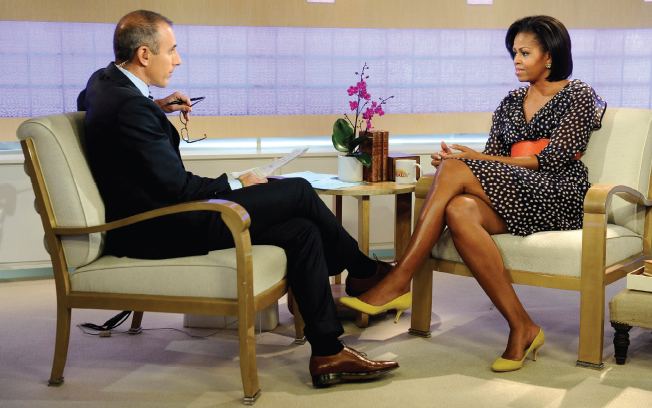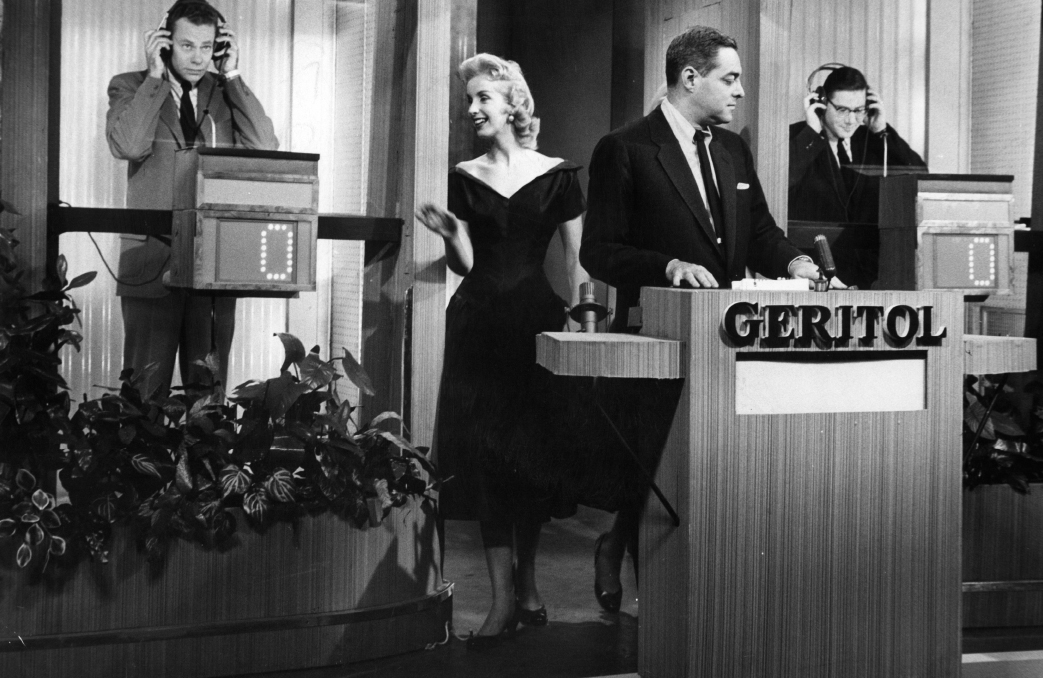Controlling Content—TV Grows Up
By the early 1960s, television had become a dominant mass medium and cultural force, with more than 90 percent of U.S. households owning at least one set. Television’s new standing came as its programs moved away from the influence of radio and established a separate identity. Two important contributors to this identity were a major change in the sponsorship structure of television programming and, more significant, a major scandal.
Program Format Changes Inhibit Sponsorship
Like radio in the 1930s and 1940s, early TV programs were often developed, produced, and supported by a single sponsor. Many of the top-rated programs in the 1950s even included the sponsor’s name in the title: Buick Circus Hour, Camel News Caravan, and Colgate Comedy Hour. Having a single sponsor for a show meant that the advertiser could easily influence the program’s content. In the early 1950s, the broadcast networks became increasingly unhappy with the lack of creative control in this arrangement. Luckily, the growing popularity, and growing cost, of television offered opportunities to alter this financial setup. In 1952, for example, a single one-hour TV show cost a sponsor about $35,000, a figure that rose to $90,000 by the end of the decade.

David Sarnoff, then head of RCA/NBC, and William Paley, head of CBS, saw an opportunity to diminish the sponsors’ role. In 1953, Sarnoff appointed Sylvester “Pat” Weaver (father of actress Sigourney Weaver) as the president of NBC. Previously an advertising executive, Weaver undermined his former profession by increasing program length from fifteen minutes (then the standard for radio programs) to thirty minutes or longer, substantially raising program costs for advertisers and discouraging some from sponsoring programs.
In addition, the introduction of two new types of programs—the magazine format and the TV spectacular—greatly helped the networks gain control over content. The magazine program featured multiple segments—news, talk, comedy, and music—similar to the content variety found in a general interest or news magazine of the day, such as Life or Time. In January 1952, NBC introduced the Today show as a three-hour morning talk-news program. Then, in September 1954, NBC premiered the ninety-minute Tonight Show. Because both shows ran daily rather than weekly, studio production costs were prohibitive for a single sponsor. Consequently, NBC offered spot ads within the shows: Advertisers paid the network for thirty- or sixty-second time slots. The network, not the sponsor, now produced and owned the programs or bought them from independent producers.
The television spectacular is today recognized by a more modest term, the television special. At NBC, Weaver bought the rights to special programs, like the Broadway production of Peter Pan, and sold spot ads to multiple sponsors. The 1955 TV version of Peter Pan was a particular success, with sixty-five million viewers. More typical specials featured music-variety shows hosted by famous singers such as Judy Garland, Frank Sinatra, and Nat King Cole.
The Rise and Fall of Quiz Shows

In 1955, CBS aired the $64,000 Question, reviving radio’s quiz-show genre (radio’s version was the more modest $64 Question). Sponsored by Revlon, the program ran in prime time (the hours between 8 and 11 P.M., when networks traditionally draw their largest audiences and charge their highest advertising rates) and became the most popular TV show in America during its first year. Revlon followed the show’s success with the $64,000 Challenge in 1956; by the end of 1958, twenty-two quiz shows aired on network television. Revlon’s cosmetic sales skyrocketed from $1.2 million before its sponsorship of the quiz shows to nearly $10 million by 1959.
Compared with dramas and sitcoms, quiz shows were (and are) cheap to produce, with inexpensive sets and mostly nonactors as guests. The problem was that most of these shows were rigged. To heighten the drama, key contestants were rehearsed and given the answers.
The most notorious rigging occurred on Twenty-One, a quiz show owned by Geritol (whose profits climbed by $4 million one year after it began to sponsor the program in 1956). A young Columbia University English professor from a famous literary family, Charles Van Doren won $129,000 in 1957 during his fifteen-week run on the program; his fame even landed him a job on NBC’s Today show. But in 1958, after a series of contestants accused the quiz show Dotto of being fixed, the networks quickly dropped twenty quiz shows. Following further rumors, a TV Guide story, a New York grand jury probe, and a 1959 congressional investigation during which Van Doren admitted to cheating, big-money prime-time quiz shows ended.
Quiz-Show Scandal Hurts the Promise of TV
“I was fascinated by the seduction of [Charles] Van Doren, by the Faustian bargain that lured entirely good and honest people into careers of deception.”
ROBERT REDFORD, DIRECTOR, QUIZ SHOW, 1995
The impact of the quiz-show scandals was enormous. First, the sponsors’ pressure on TV executives to rig the programs and the subsequent fraud put an end to any role that major sponsors had in creating TV content. Second, and more important, the fraud undermined Americans’ expectation of the democratic promise of television—to bring inexpensive information and entertainment into every household. Many people had trusted their own eyes—what they saw on TV—more than the words they heard on radio or read in print. But the scandals provided the first dramatic indication that TV images could be manipulated. In fact, our contemporary love-hate relationship with electronic culture and new gadgets began during this time.
The third, and most important, impact of the quiz-show scandals was that they magnified the division between “high” and “low” culture attitudes toward television. The fact that Charles Van Doren had come from a family of Ivy League intellectuals and cheated for fame and money drove a wedge between intellectuals—who were already skeptical of television—and the popular new medium. This was best expressed in 1961 by FCC commissioner Newton Minow, who labeled game shows, westerns, cartoons, and other popular genres as part of television’s “vast wasteland.” Critics have used the wasteland metaphor ever since to admonish the TV industry for failing to live up to its potential.
After the scandal, quiz shows were kept out of network prime time for forty years. Finally, in 1999, ABC gambled that the nation was ready once again for a quiz show in prime time. The network, at least for a couple of years, had great success with Who Wants to Be a Millionaire, the No. 1 program in 1999-2000.